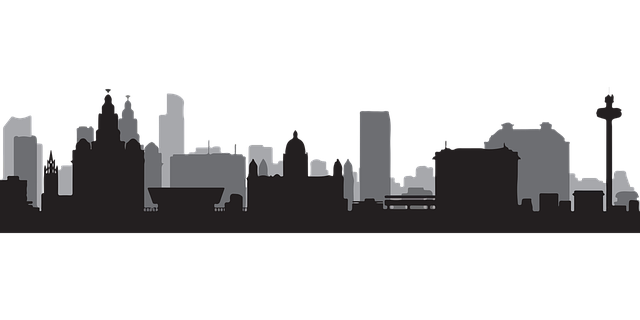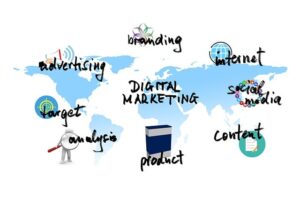Entity Disambiguation: Unraveling 50 kW Combi Boiler Model Confusion
Selecting a 50 kW combi boiler involves disambiguating similar models through advanced algorithms an…….

Selecting a 50 kW combi boiler involves disambiguating similar models through advanced algorithms analyzing key factors like fuel type (natural gas, LPG), energy efficiency ratings (ErP A-rated), hot water flow rate, and central heating capacity. This process ensures the right boiler for specific needs, whether for peak performance in large properties or energy cost savings via condensing technology. Future advancements in entity disambiguation aim to streamline selection, integration with smart homes, and IoT devices, improving customer experiences and system performance.
Entity disambiguation is a powerful technique that clarifies references, especially in complex systems like those involving 50 kW combi boilers. This article delves into the intricacies of entity disambiguation, addressing the unique challenges posed by these models. We explore various techniques to resolve ambiguities, highlighting benefits and real-world applications. Additionally, we discuss future prospects and best practices for optimal implementation, ensuring efficient and precise management of 50 kW combi boiler systems.
- Understanding Entity Disambiguation
- The Challenge of 50 kW Combi Boiler Models
- Techniques to Resolve Ambiguities
- Benefits and Applications in Real-World Scenarios
- Future Prospects and Best Practices
Understanding Entity Disambiguation

Entity disambiguation is a process that helps to resolve ambiguities arising from similar entities, especially in data and text processing. In the context of 50 kW combi boilers, this becomes crucial when multiple models with seemingly identical specifications exist. For instance, both ‘high output boiler’ and ‘condensing technology’ can describe a 50 kW combi boiler, but they cater to different needs – one focusing on peak performance for large properties with multiple bathrooms, and the other emphasizing energy efficiency.
Understanding these nuances is vital for consumers looking for the right heating solution. A natural gas fired or LPG compatible 50 kW combi boiler, for example, offers flexibility in fuel choices, while an ErP A-rated model ensures high energy efficiency. The hot water flow rate and central heating capacity also vary between models, highlighting the importance of disambiguating to find a truly suitable ‘high output’ option that meets all requirements, especially when considering the benefits of condensing technology.
The Challenge of 50 kW Combi Boiler Models

The 50 kW combi boiler, a powerhouse in residential and commercial heating systems, presents a unique challenge due to its versatility and widespread use. These boilers are designed to cater to the demanding needs of modern properties with multiple bathrooms and high output requirements. However, their popularity also means that identifying the specific model among numerous similar offerings can be perplexing for consumers and professionals alike.
This disambiguation is further complicated by the diverse fuel options these boilers support, including natural gas fired and LPG compatible models, each with its own set of specifications. Additionally, the integration of condensing technology enhances energy efficiency, contributing to environmental sustainability. When selecting or troubleshooting a 50 kW combi boiler, understanding the central heating capacity, hot water flow rate, and the ErP A rating becomes crucial for ensuring optimal performance and cost-effectiveness in large property heating applications.
Techniques to Resolve Ambiguities

Entity disambiguation for 50 kW combi boilers involves employing sophisticated techniques to clarify model identities. This is particularly crucial in industries where high output boilers, like those capable of heating large properties with multiple bathrooms, are prevalent. One effective method leverages advanced algorithms that analyze various data points—from product specifications (including condensing technology and compatibility with natural gas or LPG) to energy efficiency ratings (such as ErP A-rated) and performance metrics like hot water flow rate and central heating capacity.
These algorithms help in distinguishing between seemingly similar models, ensuring consumers get the right high-output boiler for their needs. By considering factors like energy efficiency and central heating capacity, entity disambiguation techniques enable users to make informed decisions, promoting the adoption of energy-efficient solutions that contribute to cost savings and environmental sustainability.
Benefits and Applications in Real-World Scenarios

Entity disambiguation plays a pivotal role in resolving ambiguities associated with the 50 kW combi boiler models, offering numerous benefits for both manufacturers and users. By accurately identifying and differentiating between various 50 kW combi boilers, this process ensures that the right product is selected for specific applications, be it for a large property with multiple bathrooms or smaller residential units. This precision is particularly crucial when considering the diverse fuel options available, such as natural gas fired or LPG compatible models, each with its unique advantages and installations requirements.
The application of entity disambiguation extends beyond just choosing the right boiler; it also aids in optimizing system performance and energy efficiency. High output boilers like the 50 kW combi models, equipped with condensing technology, can significantly reduce fuel consumption and emissions, contributing to both environmental sustainability and long-term cost savings. By accurately matching these high-performance boilers with their intended uses—whether for central heating or providing hot water at a consistent hot water flow rate—users can expect improved energy efficiency and value for money, as evidenced by their ErP A rating.
Future Prospects and Best Practices

As we look ahead, the future of entity disambiguation in the context of 50 kW combi boilers promises exciting possibilities. With advancements in technology, we can expect more sophisticated algorithms and machine learning models to further refine the process, ensuring accurate identification of these complex models. The integration of smart home systems and IoT (Internet of Things) devices will play a pivotal role, allowing for real-time data exchange and enhancing the overall efficiency of boiler management.
Best practices suggest that manufacturers should adopt standardized naming conventions and comprehensive product databases to streamline disambiguation processes. Additionally, providing detailed technical specifications, including dimensions, fuel types (natural gas fired or LPG compatible), condensing technology, hot water flow rate, central heating capacity, and energy efficiency ratings (such as ErP A rated), will aid in quicker and more precise resolution. Promoting these practices across the industry will result in better customer experiences, reduced installation errors, and improved overall system performance for large properties with multiple bathrooms.
Entity disambiguation plays a pivotal role in resolving ambiguities associated with 50 kW combi boilers, ensuring accurate data interpretation and streamlined operations. By employing advanced techniques, such as semantic analysis and context-aware algorithms, organizations can significantly enhance their ability to manage and maintain these complex systems. The benefits extend beyond technical efficiency, impacting real-world applications by improving safety, optimizing performance, and reducing costs. As the technology landscape evolves, continued research and adoption of best practices will be essential to unlock the full potential of 50 kW combi boilers, fostering innovation in various industries.







